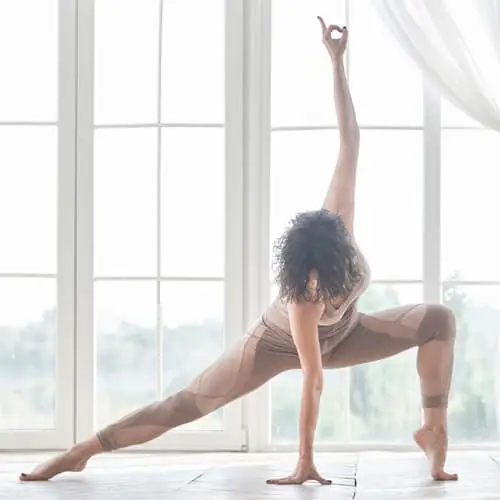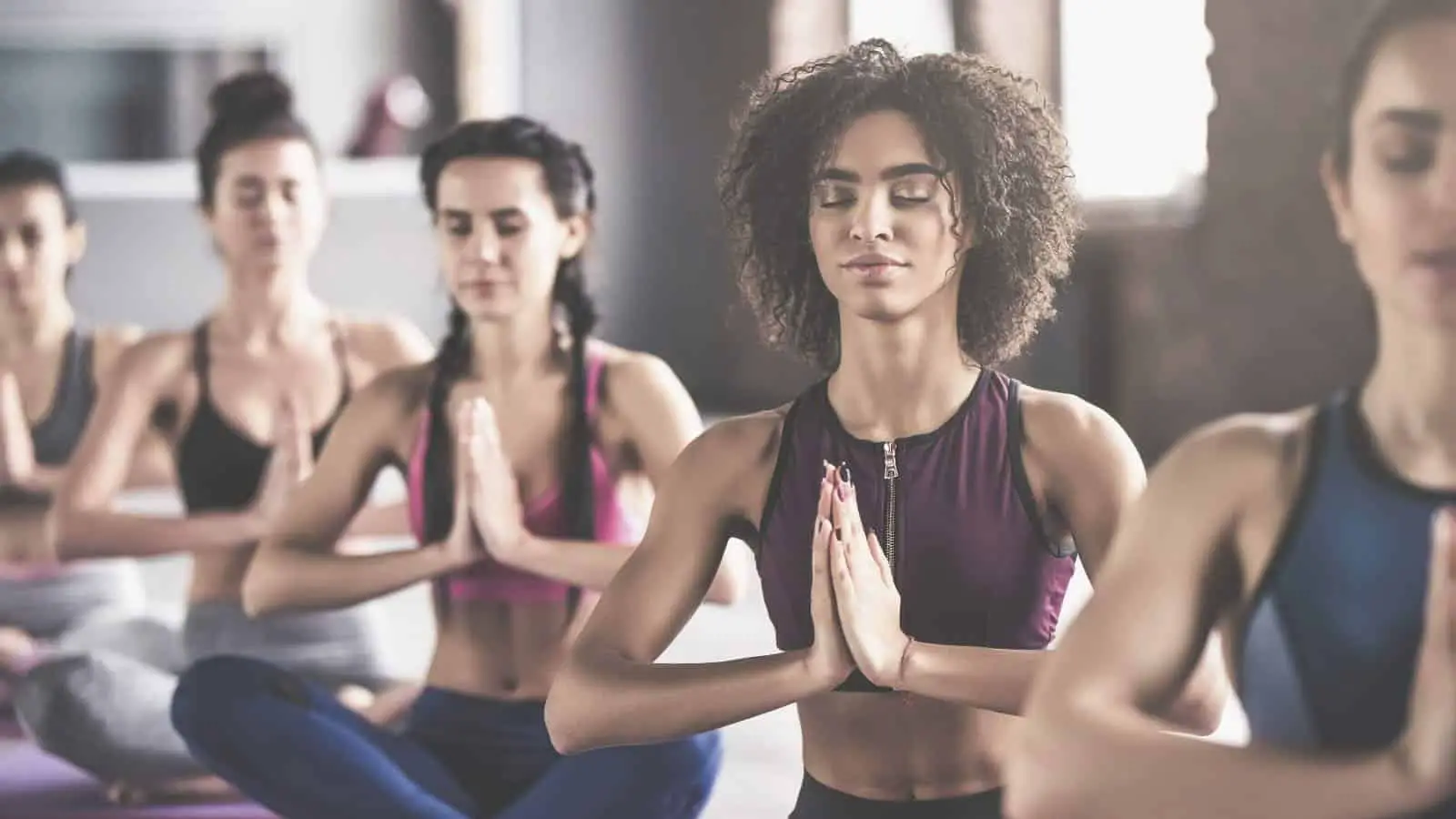There are many reasons why mindfulness is important during the practice of yoga. However, it can be challenging to practice mindfulness, particularly for people who are used to being busy and stressed out most of the time. If you are new to yoga, there are a few tips that you can follow if you wish for your mindful state.
In order to achieve mindfulness as a newbie yogi both during and outside of yoga, you can practice gratitude, do exercises to control your thoughts, take the time to do nothing regularly, meditate, work on breathing, and work on proper techniques during mindfulness exercises.
If you are interested in developing your mindfulness skills, this article is for you. You might find that the following tips improve not only your abilities with regard to mindfulness but also your yoga practice and your overall quality of life.
Observe Your Baseline State
To reach a state of mindfulness, you might find it helpful to observe exactly where you are coming from. Many experts in meditation refer to the unobserved thinking mind as “monkey mind,” a term that expresses the constant thought movements and lack of control.
It’s easy to identify with every thought and emotion that arises, rather than being able to dismiss the useless thoughts if you don’t start to observe what’s going on in your mind.
What you can get in the habit of observing your thoughts is to watch what your mind does. Don’t label or judge any of your thoughts. Just watch and become familiar with your thought patterns. This might not be easy at first, but you can become better at it over time.
The net effect will be that you are more conscious of what is going on in your own mind, and you begin to see your thoughts more objectively.
You can do something similar with your body, too. When you absorb what your body needs and is better off without, you can actually make associations between your emotions and physical sensations. This will give you a beginning when it comes to working through different mental and physical problems.
Practice Gratitude

One thing that you can do to enhance mindfulness is the practice of gratitude.
The process of practicing gratitude is actually quite simple. All you need to do is express thanks for all of the things that you have in your life. It may be difficult, especially on a bad day, but there is always something to be grateful for.
There are a few ways in which you can practice gratitude. You can create a gratitude jar, for example. To do this, write down the things that make you happy as you are experiencing them on little slips of paper. Fold them up, and then put them inside a large glass jar. This way, you will see all of these wonderful things accumulating in front of you.
Alternatively, you can start a gratitude journal on Instagram or FaceBook. Sharing the list with friends will make you stick to your routine. Or commit to making lists of things that you are grateful for every single day, for example, at the end of the day.
When you practice gratitude, you are supporting your own awareness of whatever is making you grateful and happy in the present moment, which will help you remain in the present moment when you are attempting mindfulness.
Increase Your Overall Awareness
Another way that you can prepare yourself for better mindfulness during yoga is to increase your overall awareness during the day. This involves engaging your senses, no matter what you are doing.
Whether you are giving yourself a hug, taking in the unique smells of a new place, or interacting with a person or your pet, you can do your best to really immerse yourself in the moment.
If your mind and body feel really out of sync with one another, you can try to take a bigger action. You can go for a run, do an intense workout, or even touch something icy in order to give yourself that shock back into the “present moment.”
Sometimes, there is a disconnect between what is on your mind and what your body is experiencing, and counteracting this can lead to mindfulness.
In some cases, you can even find a useful exercise in just sitting down and observing the world around you. Many people watch others passing by in public places, for example. Basically, you would only be watching people live their daily lives and coming up with narratives in your head about who they are, what they do for work, and what they might enjoy doing in their spare time.
This exercise may seem relatively simple, but it’s actually rooted in mindfulness. When you do this, you are taking the focus away from yourself and your ego to observe your surroundings at the present moment, which includes other people. It can also be very relaxing, a break in an otherwise busy and hectic day.
Try to Control Your Thoughts
You can try to be more present in the moment by simply controlling your own thoughts. Many people find it challenging to get out of their heads due to overactive imaginations, anxiety, or perhaps the stresses of their daily lives.
However, mindfulness is all about getting out of your head and simply appreciating each moment for what it is. When you feel trapped by your own thoughts, what you can do is literally tell your brain to be quiet.
This does not mean that your brain is automatically going to be quiet, of course. Sometimes, it will fight back, but then you can actively tell yourself that allowing your brain to do this is forcing you to miss potentially precious moments that you will never get back.
In some cases, if you are experiencing severe anxiety or some other type of frenzied thought pattern, you can do something else to take control of the situation. You can do many things to slow your brain down, very often involving physical activity. If you have firsthand experience with something else that can slow your brain down, this might also be worth trying.
Do Nothing for a Period of Time Every Day

In some cases, in order to prepare your brain for mindfulness, you will need to do the opposite of intense exercise and just do nothing. Many people have such busy schedules that they don’t understand the concept of taking the time to do nothing.
If you take 10 minutes to do absolutely nothing on a regular basis, this could be very helpful and make your brain more open to mindfulness when you try it in the future. When you are taking this time, make sure not to check your phone, read, interact with anyone, eat, drink, or engage in any other activities. Don’t think about the past or future; just sit there and do nothing at all.
This is not the same as mindfulness because you are not going to try to keep your focus on one object. The goal here is literally to do nothing so that you can refresh your mind. Think of it as recharging a battery so that the battery will be able to perform at its best again.
Many people are so exhausted and stressed out that their mindset alone is a barrier to mindfulness, and this exercise can help combat that barrier. Once you have given your mind a break for a while, you will be more open to the alertness and awareness required by mindfulness.
Meditate
The major difference between traditional mindfulness meditation and mindfulness during yoga is that one involves staying still, and the other involves movement. However, practicing mindfulness meditation can help you achieve mindfulness while you are doing yoga as well.
Because mindfulness can be quite difficult, some people may find it too much of a challenge to be mindful and properly do yoga at the same time. On the other hand, there are people who might actually find mindfulness easier while they are moving.
You need to figure out what works best for you. If you are one of the people who find it difficult to both be mindful and move around, you might want to start with mindfulness meditation as a warm-up exercise.
Of course, the objective of mindfulness meditation is to focus on one thing, most commonly your breathing, and try your best to keep your attention on that one thing. There are many benefits that come with mindfulness meditation, including reduced stress levels, better sleep, and other positive changes to the brain.
You can either attempt mindfulness meditation on your own or do a guided meditation. There are many recorded guided meditations that you can find online. With guided meditation, what you will do is find a relaxing spot to sit or lie down, close your eyes, and focus your attention on the voice. Focus on what the person is saying, and do your best to follow the instructions.
Whether you are using a guided meditation recording or attempting it on your own, it can be a challenge to keep your mind focused on the present moment. However, the more you practice, the easier it is likely to get. You’ll be more and more able to focus entirely on either the voice or your object of focus, ignoring any distracting thoughts that come along.
Choose One Object of Focus
When you are trying to practice mindfulness for the first time, the task itself can be overwhelming. It’s much easier if you focus on being mindful on one thing when you are first starting out. When you have more experience with mindfulness, you will be better able to focus on multiple aspects of the present moment, but this can be not easy right off the bat.
You should choose one thing to focus on while you are doing yoga, whether it is your breathing, the movement of your muscles, or where you are coming into contact with the mat.
The most common object to focus on for a beginner is breathing. Just focus on your breath, and concentrate on the air going into your belly and flowing out of your mouth. With every pose and every transition between poses during a yoga practice, continually bring your attention back to your object of focus.
Work on Your Breathing

Yoga involves a lot of deep breathing. In fact, this is just as important part of yoga as actually doing the poses accurately. There are exercises that involve only breathing, and you can also use these breathing techniques to make it easier for your body to hold poses and transition between them.
Often, at the beginning and/or the end of a yoga class, an instructor will have you practice pranayama breathing. This is the formal practice of controlling your breath. This is important to foster an understanding of yoga beyond the simple poses and further your practice overall.
It might seem simple to focus on your breath and nothing else, but mindfulness is actually key to this practice. You need to focus only on breathing techniques and not on any other distracting thoughts. This allows you to be present and drown out your thoughts so that you can exist only in the moment.
As you already know, the breath is the most common object of focus when attempting mindfulness; this is not only a relatively simple thing to monitor, but it will help you with the physical aspects of your yoga as well.
Be Kind to Yourself
You might be disappointed with yourself when you can’t force yourself to keep your attention in one direction for a long stretch of time. However, it’s important to keep in mind that mindfulness is about letting your attention rest in a certain direction, rather than trying to force it to remain there. In fact, if you try to focus too intensely, this can actually interfere with your mindfulness.
What you should do is try your best to keep your attention on your breathing or whatever object to focus you have chosen. When you notice that your attention has drifted, pause, and then bring your attention back to your object of focus. Do not be judgmental of yourself, but simply note your shift in attention and redirect it back.
Celebrate Small Achievements
As we have already emphasized, mindfulness is not about banishing all thoughts from your mind or forcefully keeping your attention on one thing. An essential part of mindfulness is also noticing when you are not mindful. In fact, this can be the most difficult part of mindfulness.
Especially when you are starting out, you need to accept that your mind is going to drift away at times. Sometimes, it is going to take several moments or even longer for you even to notice that your attention has drifted. The realization that your attention has gone somewhere else alone is a victory since it is the first step towards true mindfulness.
Even though you might be inclined to feel like you have failed when you recognize that your attention has drifted, you should actually see the fact that you have noticed this as a victory. Remember that even though it may seem like a small victory, the small wins will add up to big ones. It may not happen overnight, but with patience and effort, you will see results.
What Is Mindfulness?

Mindfulness is an acute awareness of the present moment. This includes all of your thoughts, sensations within your body, feelings, and your current surroundings. Mindfulness is a concept that is instrumental in several types of meditation.
One way to practice mindfulness is to choose an object of focus and then keep your mind only on that object. Many people choose to focus on their breathing.
If you are practicing mindfulness during yoga, this means that as you do different asanas, you need to be aware of everything that is happening. This includes an awareness of your breathing, whatever tension you might be feeling in certain muscles, your heartbeat, and external noises, such as your instructor’s voice.
This is much more difficult than it might sound. The human mind is generally very busy, and it is easy to let your thoughts drift. When you aren’t mindful, there is an infinite number of directions in which your thoughts can drift.
You can potentially think about work or some personal relationship while you are doing yoga, for example. Even when you are attempting mindfulness, your thoughts can drift to how great this feels, how everyone else should try to do it, why they aren’t doing it, and so on.
It can take a lot of practice before you can truly achieve mindfulness during yoga class. This is why if you are not able to achieve it right away, you shouldn’t give up.
It would help if you also kept in mind that mindfulness is something that you can practice anytime, not only during yoga. It’s all about being fully aware and immersed in the present moment, rather than getting bogged down in unnecessary thoughts.
Why Is Mindfulness So Important to a Yogi?
Yoga already comes with a variety of physical and mental benefits. This can be said of any exercise. You might wonder, then, why you should incorporate mindfulness into your yoga practice.
The truth is that there are many benefits that come with mindfulness during yoga. You can experience benefits by practicing mindfulness during yoga and also during the rest of your day.
Physical and Mental Health Benefits
There are a variety of health benefits that mindfulness can bring into your life. Overall, you will experience an improved sense of well-being. Mindfulness will allow you to truly and fully engage in your life, whether you are doing yoga or spending your time on something else.
If you are mindful, you will be better able to enjoy the beauty of this life since you will be present and paying attention as they are happening. Additionally, people who have become adept at practicing mindfulness generally have an easier time not getting bogged down in thoughts about the past or anxiety about the future.
People who practice mindfulness notice improvements in their physical and mental health. This includes improvement in managing chronic pain, reduced depression symptoms, better and deeper sleep, improved focus, concentration and healthier relationships.
Yoga Makes Mindfulness Easier
There are a variety of mindfulness programs that only include mental work. These often involve meditation. You’ll sit down and practice focusing your attention on a certain object. This can be your breathing, the sensations in your body, or an object in your surroundings. When your mind drifts, you should notice that your mind has drifted and bring it back to your chosen object.

However, mindfulness during yoga is different. It involves movement. The primary object of focus is the movements of your body during a yoga sequence. Yoga can make it easier to be mindful, in fact. If you are going through a well-designed sequence of poses, this can help you feel calmer, more focused, more alert, and less scattered.
Part of this is due to the yoga itself, meaning the breathing and movements, but part of it can actually be due to mindfulness as well.
Pratyahara is one of the eight limbs of yoga. In English, “pratyahara” translates to “withdrawal of the senses” or “control of the senses.” This concept involves shifting attention and awareness away from external stimuli being given to you by your senses and towards your inner self. This is very necessary for meditation and can be helpful during yoga as well.
There is no way to block out your senses completely. You are still going to experience the senses of touch, sight, hearing, smell, and taste. However, if you withdraw from your senses, you are less likely to be bogged down in the messages that they are sending you.
Essentially, when you are practicing mindfulness, you have control over where your attention is going, rather than allowing external stimuli to control your attention.
Mindfulness Can Make Your Yoga Practice Better
A very good reason to incorporate mindfulness into your yoga practice is that it will improve your yoga experience. There are a few different ways in which this can happen:
- More safety during yoga. If you’re not mindful while you are doing yoga, you are more likely to use incorrect form during a pose or not notice when you are pushing yourself too far. If you are mindful, you can adjust and modify as needed to prevent injuries.
- Observing subtle effects in progress. When you practice yoga regularly, you can make real changes to your body and mind. If you are also practicing mindfulness, you are more likely to notice these changes as they are happening. If these changes are positive, they can be encouraging. If not, you can make the necessary adjustments.
- More awareness and enjoyment. When you do yoga with mindfulness, you will often enjoy it more. You will be able to take in every detail of the experience. Also, when you are paying attention during class, the benefits of yoga are more likely to stay with you even after the class is over.
As you have seen, there are many reasons why a new yogi would want to incorporate mindfulness into a yoga practice. However, it’s important to remember that truly mastering mindfulness can be a challenging endeavor. That’s why it helps to have certain tips and guidelines that you can follow as you begin your journey.
Conclusion
Mindfulness can be a big challenge, whether you are trying to practice it for meditation or during yoga. In some ways, mindfulness during yoga is easier, but it is even more challenging in some ways. However, if you follow the above tips, they should make it quite a bit easier to achieve mindfulness during yoga.
Remember that in order to maximize your ability to be mindful during yoga, you should be practicing mindfulness both on and off your yoga mat. The more you practice, the more quickly you can master it and reap the benefits.








